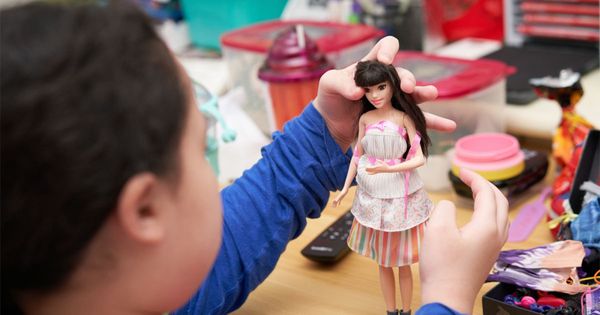Representation is a vital topic in today’s society, and companies are recognizing the importance of showcasing diversity and inclusivity. Mattel is taking the lead once again with their new Barbie doll, aimed at promoting inclusivity. Let’s delve into the details and learn more about this groundbreaking initiative!
Embracing Diversity with the Barbie Fashionistas Line
Mattel recently unveiled their first-ever Barbie doll with Down Syndrome. This doll is part of the Barbie Fashionistas line, which aims to represent diverse individuals and challenge the stigma surrounding physical disabilities being perceived as “undesirable.” This line has previously featured dolls with a prosthetic leg, hearing aids, a wheelchair, and vitiligo; a skin condition that causes patches of skin to lose color.
To ensure accuracy and authenticity, Mattel collaborated closely with the National Down Syndrome Society (NDSS). The NDSS provided valuable guidance on the doll’s appearance, features, clothing, accessories, and packaging. Down Syndrome is a genetic condition that impacts cognitive ability and can lead to varying degrees of learning disabilities. It is also characterized by distinct facial features.
Celebrating the Power of Representation
Kandi Pickard, NDSS president, and CEO shared her gratitude for this momentous occasion, stating, “This means so much for our community, who can now play with a Barbie doll that looks like them.” She emphasized the significance of representation and the remarkable strides made towards inclusion.
Mattel’s commitment to diversity is relatively recent, with previous criticism aimed at promoting unrealistic beauty standards for girls worldwide. In response to declining sales and a changing cultural landscape, Mattel introduced a variety of body types, skin tones, eye colors, and hairstyles in 2016. Building upon this progress, they later launched the Fashionistas line to introduce even more diversity.
Medical professionals were involved in the creation of these dolls, ensuring accuracy and authenticity. The new Barbie with Down Syndrome features a unique face and body sculpt, representative of individuals with Down Syndrome. The doll’s face showcases rounder features, smaller ears, a flat nasal bridge, and slightly slanted, almond-shaped eyes. Additionally, the doll has a recognizable single line on its palm, a characteristic commonly associated with people with Down Syndrome.
Thoughtful Details and Symbolism
The latest Barbie doll wears pink ankle-foot orthotics that match her dress, while her sneakers feature a zipper. These details represent children with Down Syndrome who rely on orthotic support for their feet and ankles. The doll’s dress incorporates butterflies and yellow and blue colors, raising awareness about Down Syndrome.
Another noteworthy detail is the doll’s pink pendant necklace, adorned with three upward chevrons. This symbol serves to unite the Down Syndrome community, representing the three copies of the 21st chromosome, the genetic material associated with Down Syndrome characteristics.
A Message of Inclusion and Empathy
Lisa McKnight, Mattel’s executive vice president and global head of Barbie & dolls, expressed their goal of enabling all children to see themselves in Barbie. They also emphasize the importance of children playing with dolls that do not necessarily look like them, as it fosters understanding and empathy. Introducing a Barbie doll with Down Syndrome reflects Mattel’s commitment to celebrating inclusion through play.
This remarkable initiative by Mattel ensures that children feel included and that all forms of beauty are recognized and celebrated. Share this exciting news with others and join the movement towards a more inclusive world!






